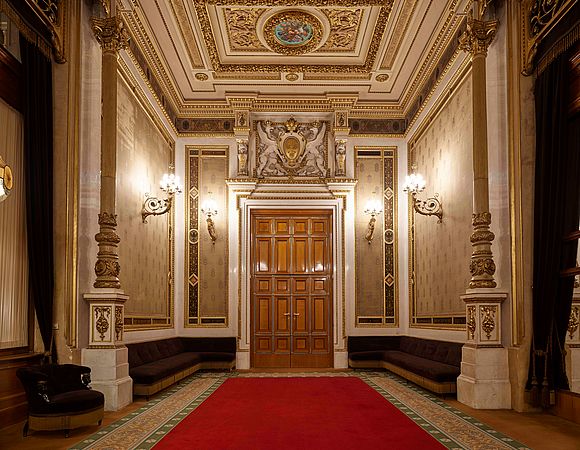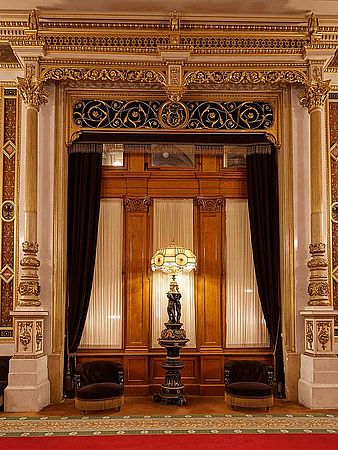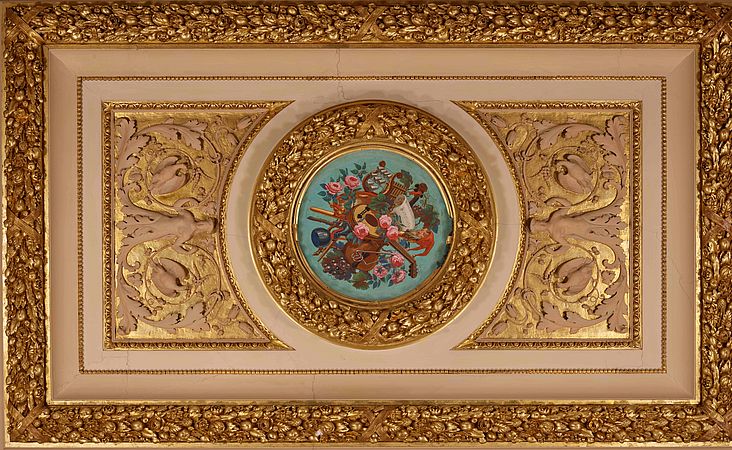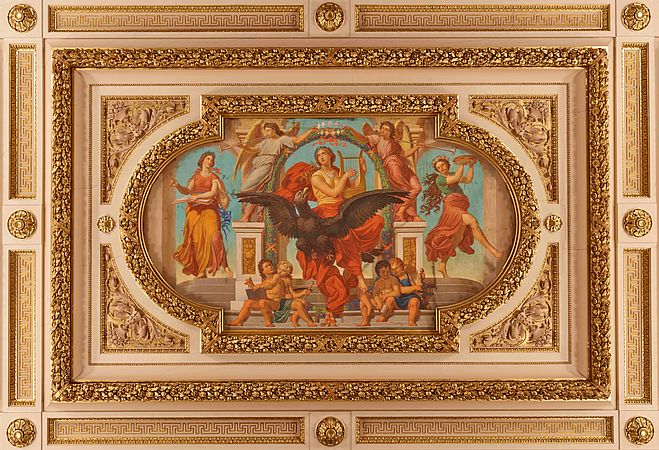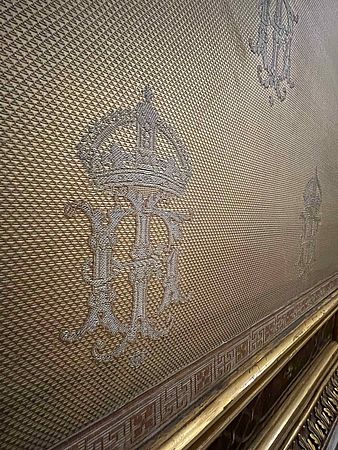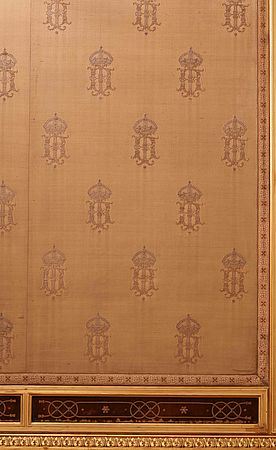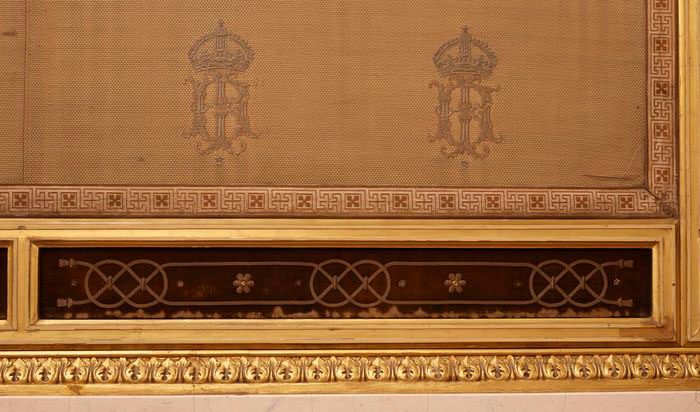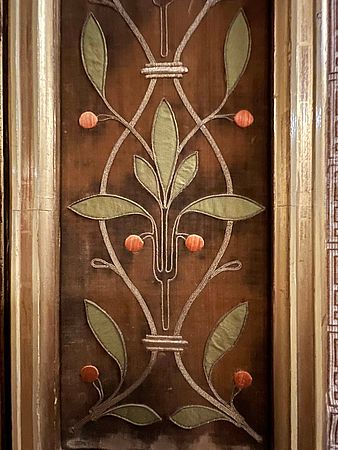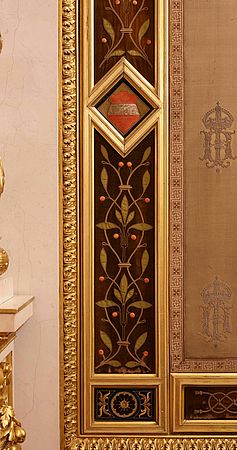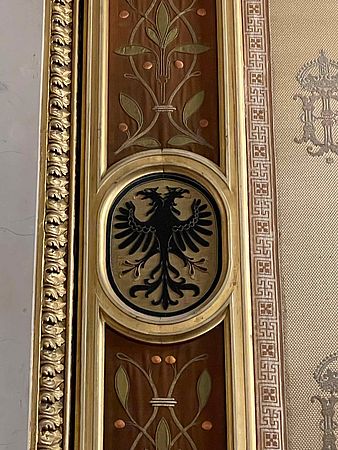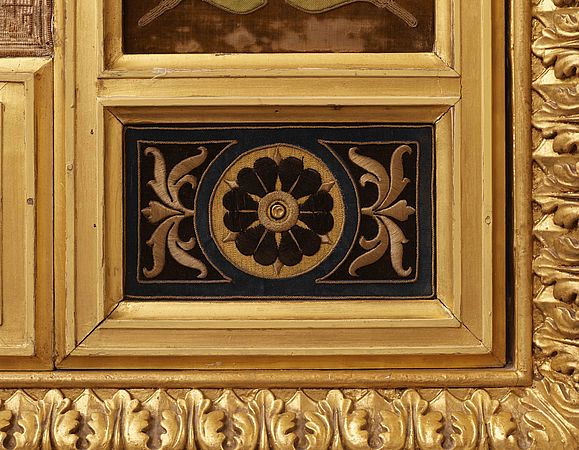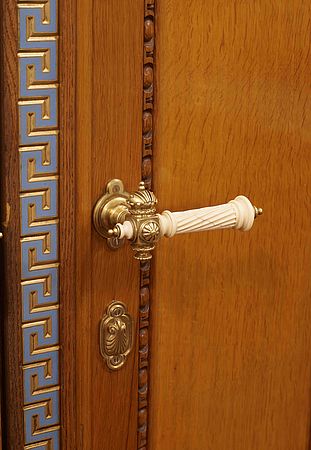The Emperor's Private Room
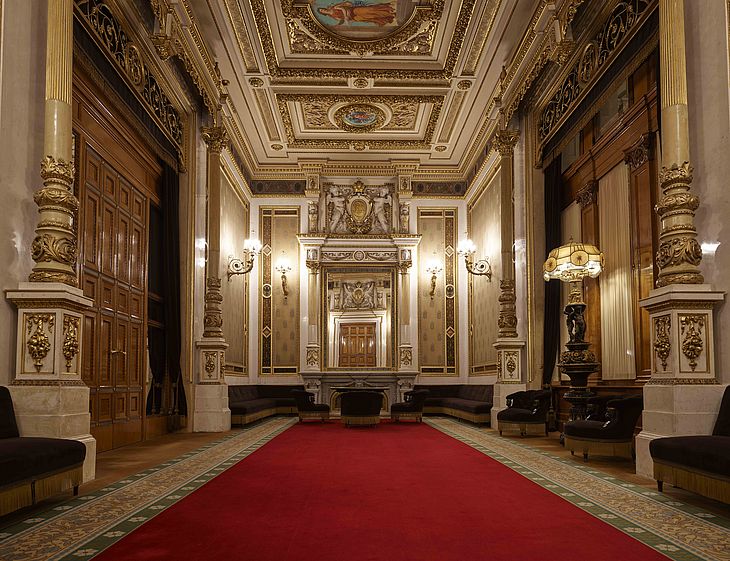
The tea salon, designed by the interior architect Josef Storck, is the showpiece of the opera’s remaining original décor. At the end of the Second World War, the great fire was extinguished before the flames reached this room, and one of the most outstanding artistic achievements of Historicism in Austria has been preserved.
The interior of the room is richly and preciously designed. Gold-plated elements on the walls and ceiling are covered with 22-carat gold leaf and the door handles are made of ivory. The walls are covered in yellow silk and decorated with sculptures by Auguste La Ligne.
The ceiling painting »Music on Eagle’s Wings« by Carl Madjera symbolises the harmonious interaction of all the arts relevant to the Opera House: in the centre is the female figure of music with a lyre in her hands, a figure with a book and stylus symbolises poetry, and finally another allegorical imgage represents dance. In the plinth area, architecture, painting, sculpture and mechanical engineering are also represented as putti - the drawing panel of the left putto, architecture, shows the ground plan of the State Opera.
The tea salon once served as a reception room, but also as a retreat for the emperor and is directly connected to today’s Mittelloge, the former court ceremonial box. Numerous initials of Franz Joseph on the silk wallpaper, above the magnificent mirror on the end wall, above the side entrance and the windows to the ceremonial staircase recall this special historical purpose of this room. Today, press conferences, interviews and ceremonies for the conferring of honorary titles and awards take place here. However, the tearoom can also be rented as a reception room in the intermission of performances.
